A ball mill is also called a ball milling machine, mineral grinding mill, or ore grinding mill. It is a grinder that uses balls to reduce the size of materials for mineral dressing processes, cement plants, fertilizer plants, etc.
How does a ball mill work?
A ball mill works on the principle of impact and attrition.
Add balls into the ball drum to approximately 33%. The figure is not fixed, as long as it is within the range of 30%–45%. As the ball mill rotates, the balls 'stick' to the inner surface of the ball drum due to the centrifugal force and are lifted on the rising side. At a certain angle, balls cascade down to the centerline of the ball mill because gravity overcomes the centrifugal force. And the ore is reduced to the required size by impact (balls impacting with the ore) and attrition (ore rubbing against other bits of ore and the milling balls).
Ball mill diagram
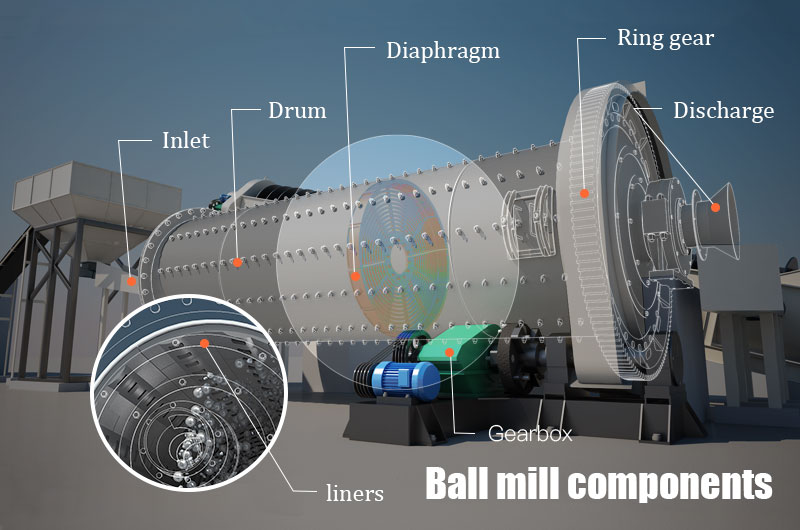
Important ball mill parts:
- Inlet – crushed ore is fed to the ball mill through the inlet.
- Discharge – reduced feed exits the mill through the discharger.
- Drum – the drum is the cylindrical casing of the ball mill. The inside surface of the ball mill drum is fitted with liners (also referred to as armor) that protect the steel shell from abrasion. There are several types of ball mill liners like galvanized iron plates, manganese liners, rubber liners, etc. Choose the appropriate ball mill liner according to the grinding material, output, budget, etc.
- Ring Gear – a gear ring installed on the outer periphery of the drum.
- Electric Motor – a motor used to rotate the drum. The motor drive train leads to a gearbox than a ring gear. The motor is usually fitted with a variable speed drive (VSD) to control the rpm of the ball mill.
- Gearbox – used for speed reduction from the motor to the ball mill.
- Balls-ball mill balls are also known as ball mill media. There are steel balls, ceramic balls, manganese alloy steel balls, etc. The selection of grinding media depends upon what material to be ground. The ball size is also of great importance. You need to choose the appropriate ball type, ball size, and ratio of large, medium, and small balls, for higher grinding efficiency.
- Bearings - small ball mills use anti-friction cylindrical roller bearings. Large ball mills use trunnion bearings and hydrostatic bearings.
Ball mill types
According to the process conditions, the ball mill can be divided into:
1. Wet ball mill: Grind the material into a slurry with a certain concentration (generally 60–70%). Wet ball mills are generally for mineral beneficiation, and the mills are generally single-chamber structures.
2. Dry ball mill: Grind the material into mineral powder with qualified fineness. Dry ball mills are for grinding hard materials like silica sand, quartz stone, marble, and cement clinker.
The difference between dry ball milling and wet ball milling is whether to add water. Adding water is wet.
According to the structure, the ball mill can be divided into:
1. Grid-type ball mill: When a product with a fineness of 0.2–0.3 mm and uniform fineness is required, it is better to use a grid-type ball mill.
It can discharge qualified products in time, reduce the over-grinding of ore, and improve grinding efficiency. Grid-type ball mill is often used in the first stage grinding system.
2. Overflow ball mill: This type of ball mill has a fine grinding effect, so it is suitable for the second stage of the two-stage grinding process. The feed particle size is generally less than 0.2 mm.
Its capacity is about 15% lower than that of the grid-type ball mill with the same specifications, and the amount of grinding media is also reduced.
According to the grinding media, mills can be divided into:
1. Ball mill: The grinding media is cast grinding steel balls, and forged grinding steel balls.
2. Rod Mill: The grinding media is grinding cylpebs and grinding rods.
3. Ceramic ball mill: The grinding medium is ceramic balls.
According to the length-to-diameter ratio of the drum, the ball mill can be divided into:
1. Ball mill: A typical ball mill will have a drum length that is 1 or 1.5 times the drum diameter.
2. Tube mill: A mill with a drum length to diameter ration greater than 1.5 is referred to as tube mill.
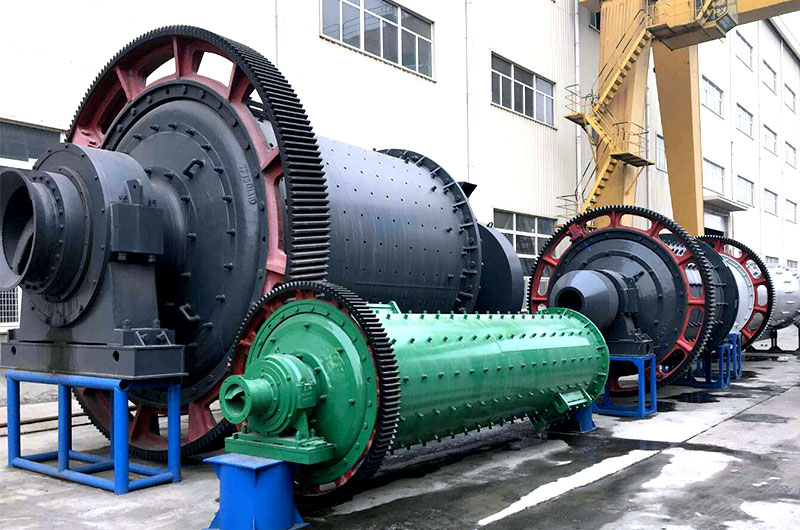
Ball mill application
The ball mill machine is usually applied in the comminution stage as a grinding mill to reduce the size of the feed. It can be applied in both primary and secondary grinding stage. In primary grinding, it is fed from crushers such as jaw crushers. If the ball mill is used for secondary grinding, it is fed from other grinders, e. g. rod mills or SAG mills.
Now that we know ball mill is an efficient grinder, what materials can it grind?
Ball mill in mining and mineral processing
Ball mill grinders are commonly used for grinding a variety of ores like copper ore, gold ore, iron ore, lead-zinc ore, nickel ore, manganese ore, chrome ore, lithium ore, etc. The role of the ball mill in ore processing is to reduce the size of the ore particles so that valuable minerals can be extracted more efficiently.
It is also used for grinding bentonite, kaolin, barite, calcite, dolomite, mica, talc, etc.
In ore processing, ball mills often work in conjunction with other equipment such as crushers, flotation machines, magnetic separators, gravity separation machines.
Ball mill in cement grinding
The main purpose of the cement ball mills is to grind the clinker and gypsum into a finer powder to produce the final cement product.
In addition to grinding clinker and gypsum, ball mills can also be used for grinding other materials such as slag, pozzolan, dolomite, and fly ash. These materials are added to the cement to improve its properties, such as strength and durability.
Ball mill in the fertilizer industry
Ball mills are used to grind raw materials such as phosphate rock, limestone, and other minerals into fine powder. They are also used for mixing materials. For example, a ball mill can be used to mix urea and ammonium nitrate to create a fertilizer product.
Ball mills can also efficiently grind coal, coke, construction materials, glass, ceramics, quartz stone, silica sand, marble, etc.
In addition to grinding, ball mill machine is also used for mixing, blending, and dispersing materials. It is popular in the chemical, pharmaceutical, and food industries, as well as in mining and mineral processing.
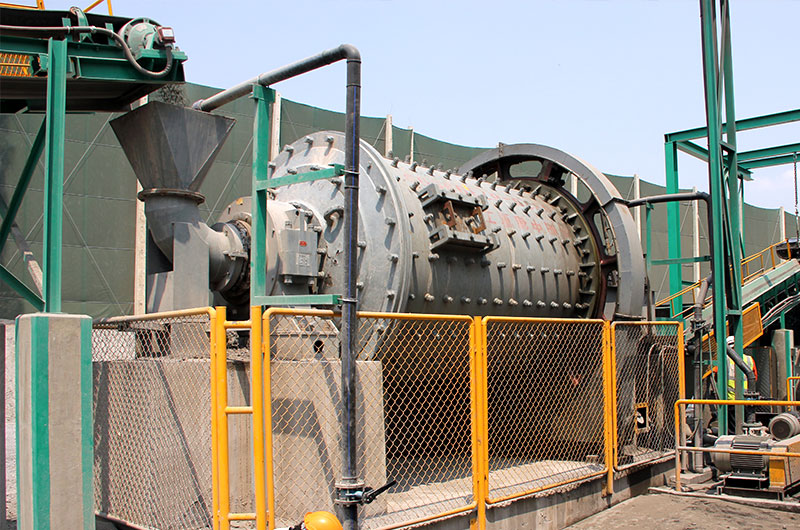
Ball mill manufacturer: FTM Machinery, your best choice
With more than 40 years of experience in ball mill technology, FTM Machinery can manufacture, supply, and export durable and robust ball mill grinders at a lower cost.
Long life and minimum maintenance
To help you get the most of your business, we have designed our ball mills with long-term operation in mind with a minimum need for maintenance.
Robust design results in long service life and less required maintenance. Therefore, wearable parts of FTM Machinery ball mills are made of high-quality raw materials to extend their service life. The shell of the ball mill drums, linear, grinding medium, to name a few.
Efficient operation through automatization
FTM Machinery engineers welcome the opportunity to assist you with circuit and circuit control design as well as the start-up, operation, and optimization of the milling plant. Automatic operation saves power, grinding media, and liner wear while increasing capacity.
Effective ball bill grinding technology
The direction of rotation of the screw at the feeding end and the screw at the discharging end are opposite. This design guarantees the even feeding speed and uniform discharging. In addition, the iron remover can be equipped subject to your own needs.
Sufficient parts supply and best service.
The ball mill produced by FTM Machinery can minimize the wear during operation due to the extraordinary casting process and heat-treating technology.
The grinding balls made of high manganese steel characterize good toughness and good manufacture ability with low price.
Ball mill accessories include big gear, pinion, hollow shaft, ring gear, big ring gear, steel ball, compartment board, transmission, bearing, end lining, and so on.
Sufficient supply of each component aims at minimizing equipment repair and replacement time.
Fast delivery speed
Even during the Covid-19, as long as there is trade permission in your country, we will deliver the products as fast as we could.
The following is the fastest shipping method and approximate delivery time according to the actual situation of different countries. (Only some customer countries/regions are listed)
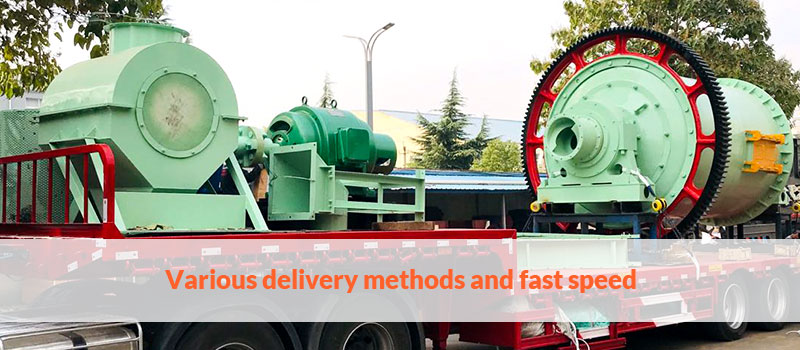
| Location | Country | City | Delivery method | Time required(day) |
| Southeast Asia | Indonesia | Jakarta | shipping | 11 |
| Malaysia | Klang | shipping | 12 | |
| Philippines | Manila | shipping | 5 | |
| Thailand | Laem Chabang | shipping | 9 | |
| East Asia | Japan | Osaka | shipping | 2 |
| Korea | Pusan | shipping | 2 | |
| Middle Asia | Uzebikistan | Tashkent | railway | 16 |
| Kazakhstan | Almaty | railway | 8 | |
| Saudi Arabia | Jeddah | railway | 25 | |
| South Asia | India | Nhava Sheva | shipping | 20 |
| Pakistan | Karachi | shipping | 26 | |
| Africa | South Africa | Durban | shipping | 30 |
| Uganda | Kampala | shipping | 45 | |
| Libya | Tripoli | shipping | 35 | |
| Zambia | Lusaka | shipping | 45 | |
| Kenya | Mombasa | shipping | 32 | |
| Egypt | Alexander | shipping | 34 | |
| Nigeria | Lagos | shipping | 45 | |
| Europe | Russia | Vladivostok | shipping | 10 |
| UK | FEIXSTOWE | shipping | 35 | |
| North America | The USA | LOG ANGELES | shipping | 20 |
| Canada | Vancouver | shipping | 22 | |
| Mexico | MANZANILLO | shipping | 21 | |
| South America | Brazil | SANTOS | shipping | 38 |
| Argentina | BUENOS AIRES | shipping | 45 | |
| Chile | VAL PARAISO | shipping | 56 | |
| Oceania | Australia | SYDNEY | shipping | 20 |
| Papua New Guinea | PORT MORESBY | shipping | 30 | |
| New Zealand | AUCKLAND | shipping | 24 |
Parameter
| Model | Shell rotation speed (r/min) |
Ball load (t) |
Feeding size (mm) |
Discharging size (mm) |
Capacity (t/h) |
Motor power (kw) |
Total weight (t) |
| Ф900×1800 | 36-38 | 1.5 | <20 | 0.075-0.89 | 0.65-2 | 18.5 | 5.85 |
| Ф900×3000 | 36 | 2.7 | <20 | 0.075-0.89 | 1.1-3.5 | 22 | 6.98 |
| Ф1200×2400 | 36 | 3 | <25 | 0.075-0.6 | 1.5-4.8 | 30 | 13.6 |
| Ф1200×3000 | 36 | 3.5 | <25 | 0.074-0.4 | 1.6-5 | 37 | 14.3 |
| Ф1200×4500 | 32.4 | 5 | <25 | 0.074-0.4 | 1.6-5.8 | 55 | 15.6 |
| Ф1500×3000 | 29.7 | 7.5 | <25 | 0.074-0.4 | 2-5 | 75 | 19.5 |
| Ф1500×4500 | 27 | 11 | <25 | 0.074-0.4 | 3-6 | 110 | 22 |
| Ф1500×5700 | 28 | 12 | <25 | 0.074-0.4 | 3.5-6 | 130 | 25.8 |
| Ф1830×3000 | 25.4 | 11 | <25 | 0.074-0.4 | 4-10 | 130 | 34.5 |
| Ф1830×4500 | 25.4 | 15 | <25 | 0.074-0.4 | 4.5-12 | 155 | 38 |
| Ф1830×6400 | 24.1 | 21 | <25 | 0.074-0.4 | 6.5-15 | 210 | 43 |
| Ф1830×7000 | 24.1 | 23 | <25 | 0.074-0.4 | 7.5-17 | 245 | 43.8 |
| Ф2100×3000 | 23.7 | 15 | <25 | 0.074-0.4 | 6.5-36 | 155 | 45 |
| Ф2100×4500 | 23.7 | 24 | <25 | 0.074-0.4 | 8-43 | 245 | 56 |
| Ф2100×7000 | 23.7 | 26 | <25 | 0.074-0.4 | 12-48 | 280 | 59.5 |
| Ф2200×4500 | 21.5 | 27 | <25 | 0.074-0.4 | 9-45 | 280 | 54.5 |
| Ф2200×6500 | 21.7 | 35 | <25 | 0.074-0.4 | 14-26 | 380 | 61 |
| Ф2200×7000 | 21.7 | 35 | <25 | 0.074-0.4 | 15-28 | 380 | 62.5 |
| Ф2200×7500 | 21.7 | 35 | <25 | 0.074-0.4 | 15-30 | 380 | 64.8 |
| Ф2400×3000 | 21 | 23 | <25 | 0.074-0.4 | 7-50 | 245 | 58 |
| Ф2400×4500 | 21 | 30 | <25 | 0.074-0.4 | 8.5-60 | 320 | 72 |
| Ф2700×4000 | 20.7 | 40 | <25 | 0.074-0.4 | 22-80 | 380 | 95 |
| Ф2700×4500 | 20.7 | 48 | <25 | 0.074-0.4 | 26-90 | 480 | 102 |
| Ф3200×4500 | 18 | 65 | <25 | 0.074-0.4 | As per process conditions | 630 | 149 |
| Ф3600×4500 | 17 | 90 | <25 | 0.074-0.4 | As per process conditions | 850 | 169 |
| Ф3600×6000 | 17 | 110 | <25 | 0.074-0.4 | As per process conditions | 1250 | 198 |
| Ф3600×8500 | 18 | 131 | <25 | 0.074-0.4 | 45.8-256 | 1800 | 260 |
| Ф4000×5000 | 16.9 | 121 | <25 | 0.074-0.4 | 45-208 | 1500 | 230 |
| Ф4000×6000 | 16.9 | 146 | <25 | 0.074-0.4 | 65-248 | 1600 | 242 |
| Ф4000×6700 | 16.9 | 149 | <25 | 0.074-0.4 | 75-252 | 1800 | 249 |
| Ф4500×6400 | 15.6 | 172 | <25 | 0.074-0.4 | 84-306 | 2000 | 280 |
| Ф5030×6400 | 14.4 | 216 | <25 | 0.074-0.4 | 98-386 | 2500 | 320 |
| Ф5030×8300 | 14.4 | 266 | <25 | 0.074-0.4 | 118-500 | 3300 | 403 |
| Ф5500×8500 | 13.8 | 338 | <25 | 0.074-0.4 | 148-615 | 4500 | 525 |
| Model | Feeding size (mm) |
Capacity (t/h) |
| Ф900×1800 | <20 | 0.65-2 |
| Ф900×3000 | <20 | 1.1-3.5 |
| Ф1200×2400 | <25 | 1.5-4.8 |
| Ф1200×3000 | <25 | 1.6-5 |
| Ф1200×4500 | <25 | 1.6-5.8 |
| Ф1500×3000 | <25 | 2-5 |
| Ф1500×4500 | <25 | 3-6 |
| Ф1500×5700 | <25 | 3.5-6 |
| Ф1830×3000 | <25 | 4-10 |
| Ф1830×4500 | <25 | 4.5-12 |
| Ф1830×6400 | <25 | 6.5-15 |
| Ф1830×7000 | <25 | 7.5-17 |
| Ф2100×3000 | <25 | 6.5-36 |
| Ф2100×4500 | <25 | 8-43 |
| Ф2100×7000 | <25 | 12-48 |
| Ф2200×4500 | <25 | 9-45 |
| Ф2200×6500 | <25 | 14-26 |
| Ф2200×7000 | <25 | 15-28 |
| Ф2200×7500 | <25 | 15-30 |
| Ф2400×3000 | <25 | 7-50 |
| Ф2400×4500 | <25 | 8.5-60 |
| Ф2700×4000 | <25 | 22-80 |
| Ф2700×4500 | <25 | 26-90 |
| Ф3200×4500 | <25 | As per process conditions |
| Ф3600×4500 | <25 | As per process conditions |
| Ф3600×6000 | <25 | As per process conditions |
| Ф3600×8500 | <25 | 45.8-256 |
| Ф4000×5000 | <25 | 45-208 |
| Ф4000×6000 | <25 | 65-248 |
| Ф4000×6700 | <25 | 75-252 |
| Ф4500×6400 | <25 | 84-306 |
| Ф5030×6400 | <25 | 98-386 |
| Ф5030×8300 | <25 | 118-500 |
| Ф5500×8500 | <25 | 148-615 |

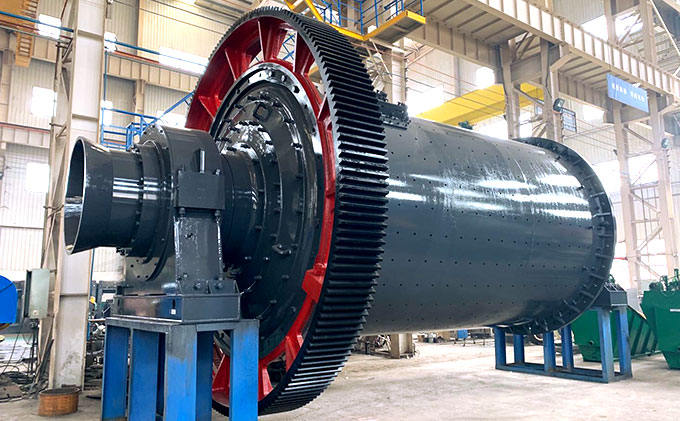
 Download Ball Mill
844.75 KB
Download Ball Mill
844.75 KB


